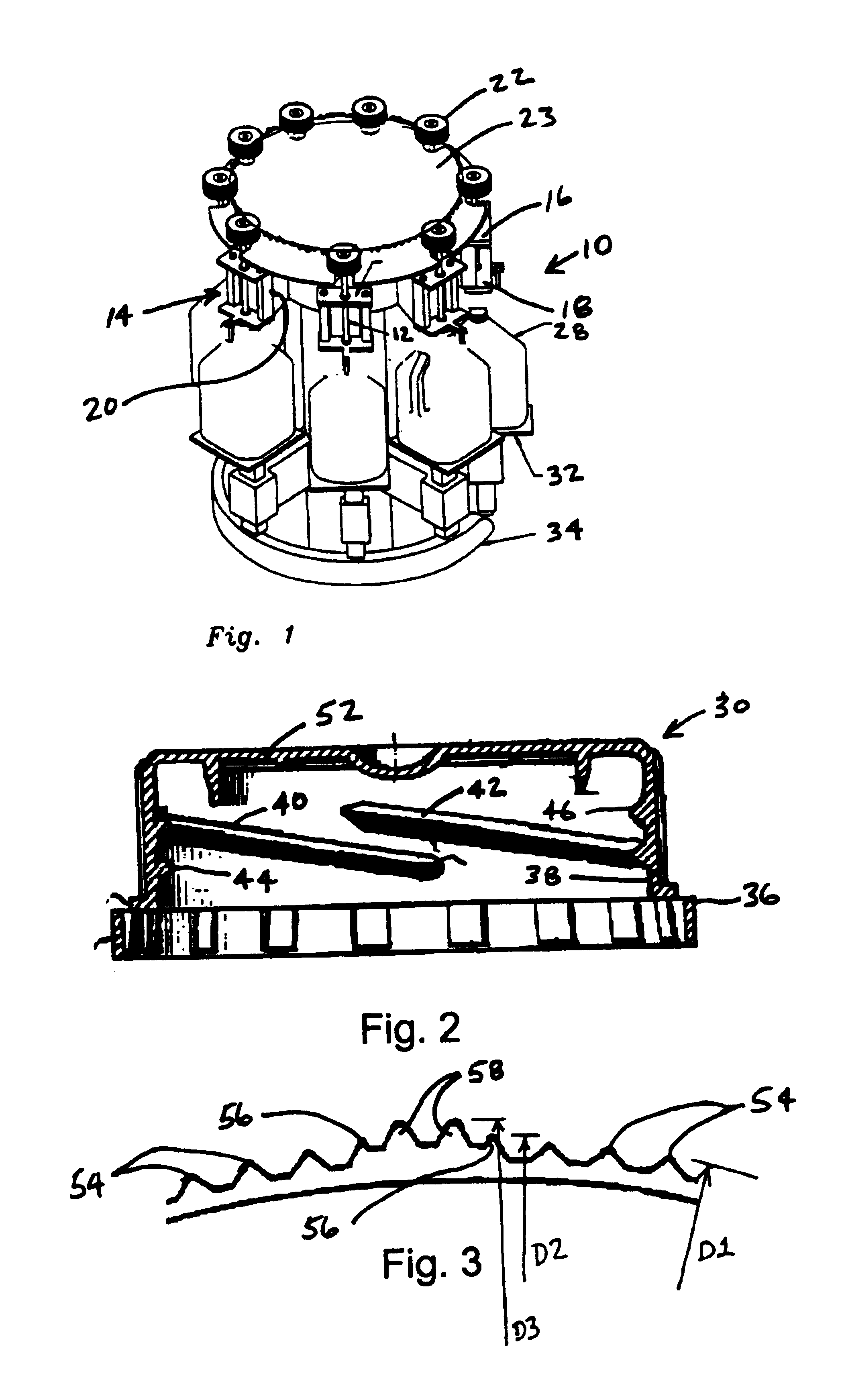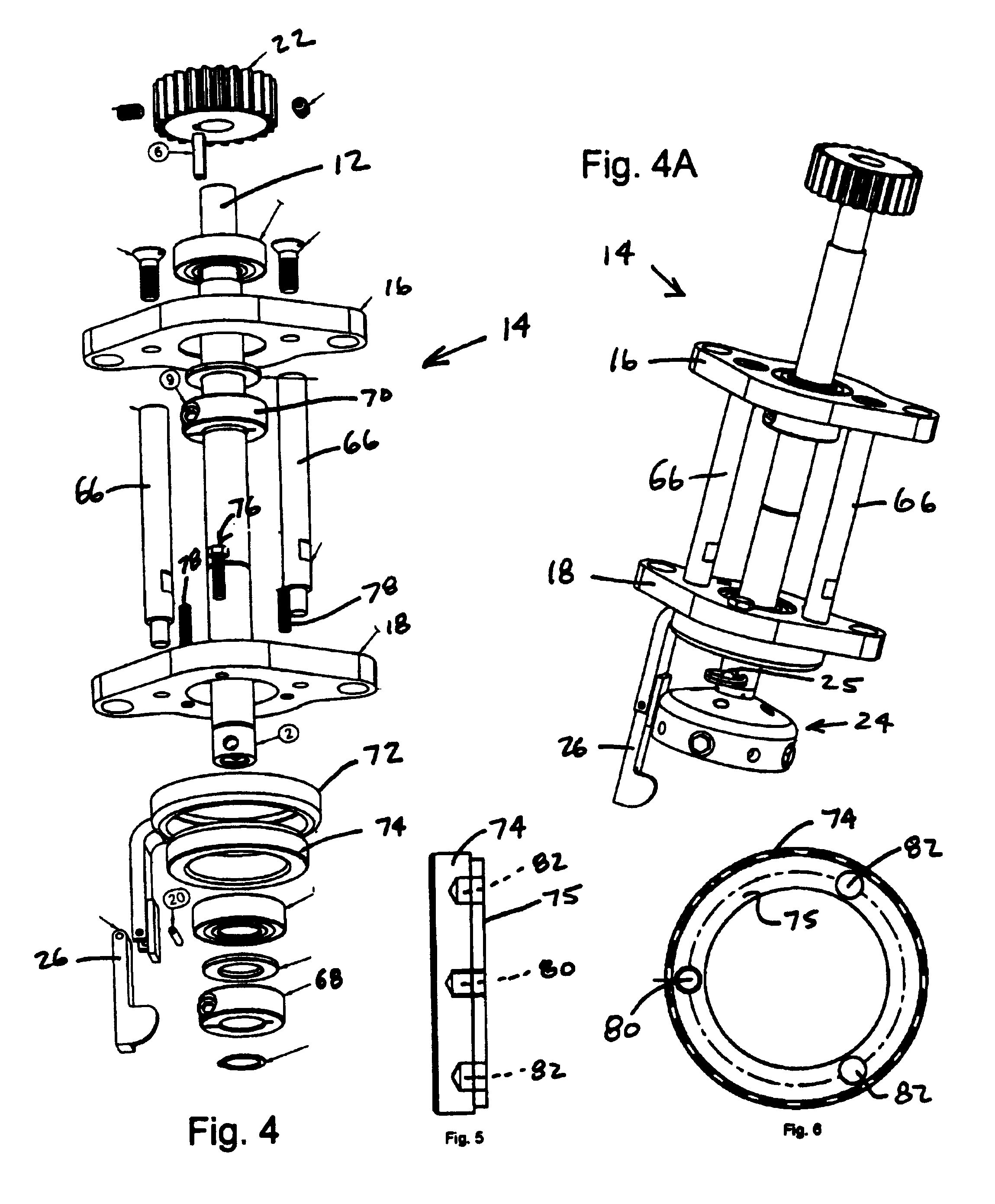Container closure system
a container and closure technology, applied in the field of container closure system, can solve the problems of overtightening or stripping of the thread connection between the closure and the container, the inability of practical cleaning systems to remove all milk residue and deposits from the milk contact surface, and the application of threaded closures to milk containers, etc., to achieve the effect of simplifying and facilitating the application of threaded caps, preventing stripping of caps, and reducing the number of moving and fixed parts
- Summary
- Abstract
- Description
- Claims
- Application Information
AI Technical Summary
Benefits of technology
Problems solved by technology
Method used
Image
Examples
Embodiment Construction
[0024]FIG. 1 shows a turret assembly 10 with several capping stations. Each capping station includes a spindle assembly 14 held in place by a pair of support plates 16 and 18. The spindle assembly includes drive shaft 12 which is held and guided by an upper support plate 16 and a lower support plate 18. The support plates 16 and 18 are connected to the turret assembly 10 by a spindle support arm 20. A small pinion gear 22 is affixed to the upper end of the drive shaft 12, and a chuck 24 (shown in detail in FIGS. 4 and 4A) is connected, by a quick-release pin 25, to the lower end of the drive shaft 12. Attached to the lower support plate 18 is a hinged stop arm 26 which engages the handle of a bottle 28 to prevent rotation of the bottle as a cap 30 (shown in detail in FIGS. 2 and 3) is tightened onto the bottle 28.
[0025]As the turret 10 rotates in the direction of the arrow shown in FIG. 1, a bottle support 32, carried by the turret assembly 10, engages a cam 34, and lifts each bottl...
PUM
 Login to View More
Login to View More Abstract
Description
Claims
Application Information
 Login to View More
Login to View More - R&D
- Intellectual Property
- Life Sciences
- Materials
- Tech Scout
- Unparalleled Data Quality
- Higher Quality Content
- 60% Fewer Hallucinations
Browse by: Latest US Patents, China's latest patents, Technical Efficacy Thesaurus, Application Domain, Technology Topic, Popular Technical Reports.
© 2025 PatSnap. All rights reserved.Legal|Privacy policy|Modern Slavery Act Transparency Statement|Sitemap|About US| Contact US: help@patsnap.com



